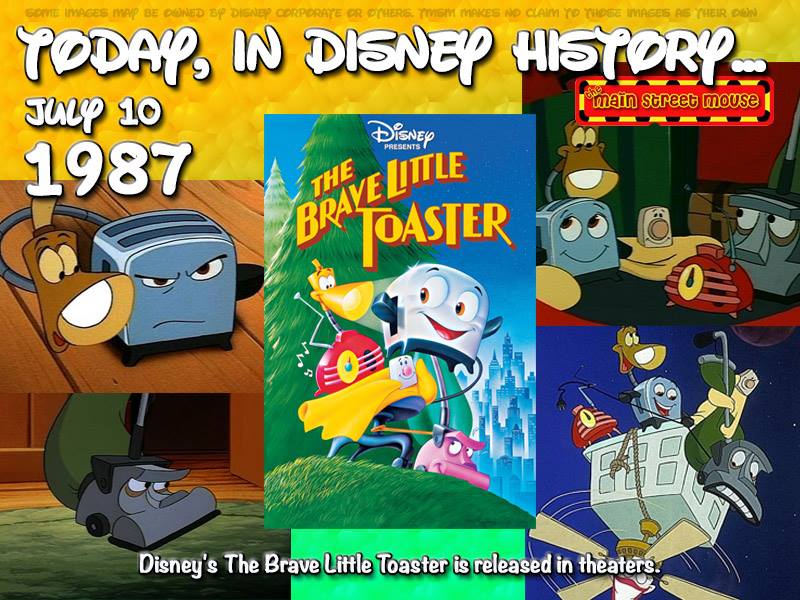Today In Disney History ~ July 10th
The Brave Little Toaster is a 1987 American animated comedy film adapted from the 1980 novel The Brave Little Toaster: A Bedtime Story for Small Appliances by Thomas M. Disch. The film was directed by Jerry Rees. The film is set in a world where household appliances and other electronics come to life, pretending to be lifeless in the presence of humans. The story focuses on five appliances— a toaster, a gooseneck lamp, an electric blanket, a radio, and a vacuum cleaner—who go on a quest to search for their original owner.
The film was produced by Hyperion Animation along with The Kushner-Locke Company. Many CalArts graduates, including the original members of Pixar Animation Studios were involved with this film. While the film received a limited theatrical release, The Brave Little Toaster was popular on home video and was followed by two sequels a decade later: The Brave Little Toaster to the Rescue (1999) and The Brave Little Toaster Goes to Mars (1998).
The film rights to The Brave Little Toaster, the original novel by Thomas M. Disch, were purchased by the Walt Disney Studios in 1982, two years after its appearance in the publication Science Fiction and Fantasy Magazine. After animators John Lasseter and Glen Keane had finished a short 2D/3D test film based on the book Where the Wild Things Are, Lasseter and producer Thomas L. Wilhite decided they wanted to produce a whole feature this manner.
The story they chose was The Brave Little Toaster, and this became the first CGI film Lasseter ever pitched. But in their enthusiasm, they ran into issues pitching the idea to two high level Disney executives, animation administrator Ed Hansen, and Disney president Ron W. Miller. During Lasseter and Wilhite’s pitch, the film was rejected due to the costs of having traditionally animated characters inside then-expensive computer-generated backgrounds.
A few minutes after the meeting, Lasseter received a phone call from Hansen and was instructed to come down to his office, where Lasseter was informed that he was dismissed. Originally set to commence at the Disney studios with a budget of $18 million, development was then transferred to the new Hyperion Pictures, which had been created by former Disney employees Tom Wilhite and Willard Carroll, who took the production along with them after Wilhite successfully requested the project from then-president Ron Miller. As a result, the film was financed as an independent production by Disney, with the aid of electronics company TDK Corporation and video distributor CBS/Fox Video.
 TMSM Today in Graphic by Sherry Rinaldi DeHart; Wiki
TMSM Today in Graphic by Sherry Rinaldi DeHart; Wiki - EPCOT Food & Wine Fest Dates, Details Announced - April 23, 2024
- Daydream Believing! - April 19, 2024
- Disney Adventure World: Disneyland Paris Reimagines 2nd Park - April 12, 2024




